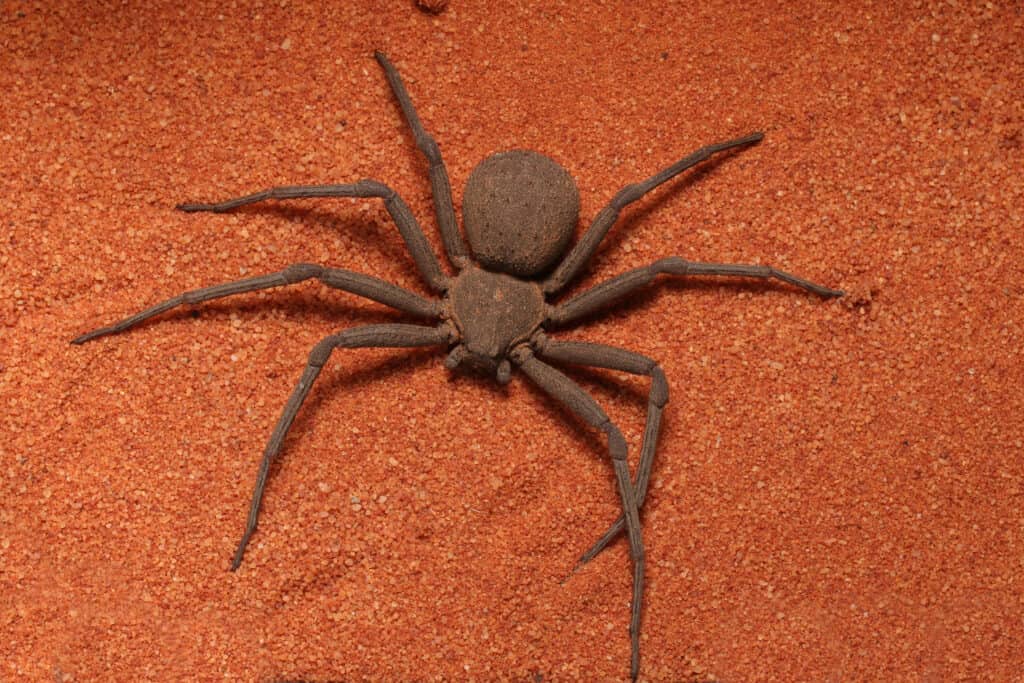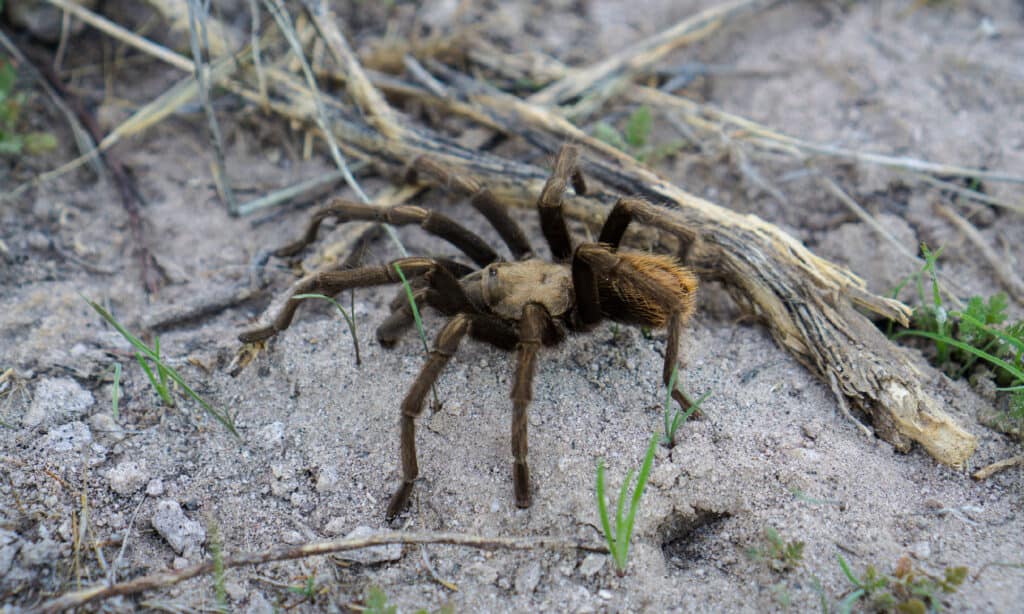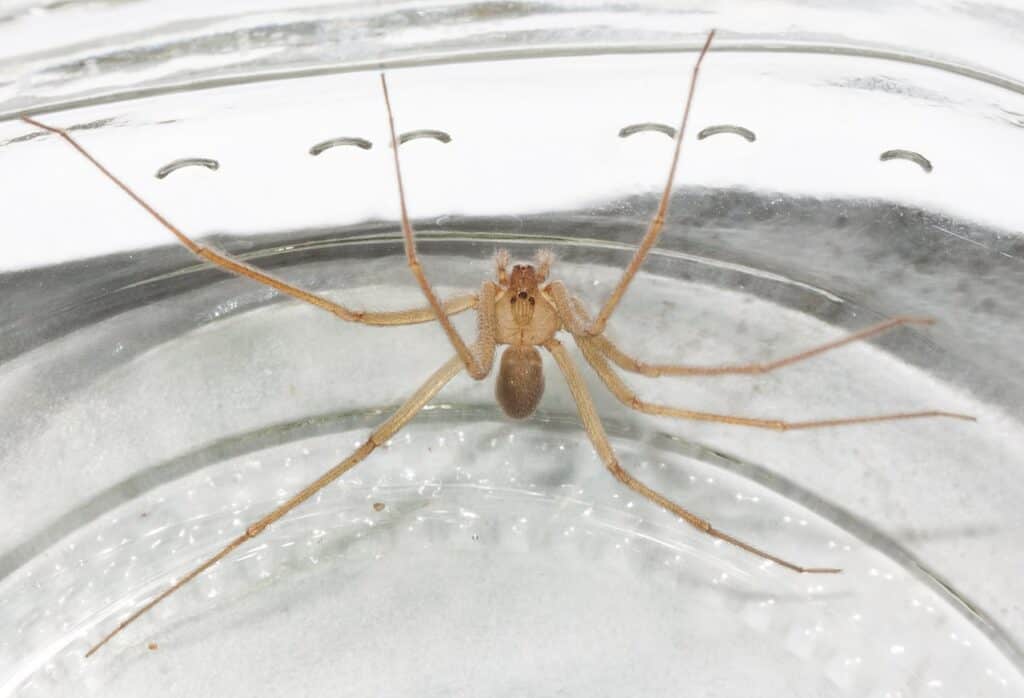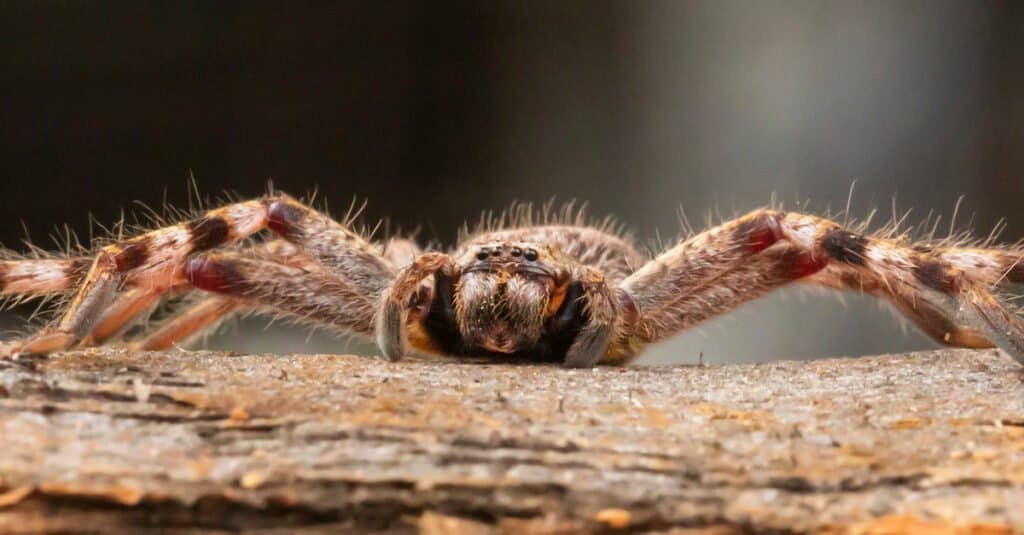Deserts are not the wasteland that most people think they are but are actually filled with an abundance of life. Animals you may find in deserts include snakes, foxes, birds, scorpions, lizards, spiders, and much more. Not every animal can live in a desert, but those that can are specifically adapted to survive in the land’s extreme conditions.
Only certain spiders can survive in deserts. High heat is not the only circumstance that spiders have to worry about when living in a desert, but they also must combat situations like long periods with no water and extreme cold. The desert-dwelling spiders on this list are just a few capable of living in a desert. A spider’s sturdiness and lifestyle make it a perfect inhabitant of a desert. In this article, we’ll take a look at the 6 desert-dwelling spiders that thrive in an environment where most animals can’t.

What Spiders Live in Deserts?
Currently, there are around 45,000 species of spiders discovered, and many of them have the adaptations needed to live in a desert. Spiders like orb-weavers that need ample moisture will never last in a dry desert habitat, but for some, it is possible.
Spiders most common in deserts:
- Tarantulas
- Trapdoor Spiders
- Wolf Spiders
- Huntsman Spiders
- Ground Spiders
- Jumping Spiders
- Crab Spiders.
Deserts have an abundance of life in them, and spiders are one of the many animals that are able to live in a desert. The spiders on this list are just a few of the species able to live in the desert, as there are thousands of spiders in the world, and new ones are being discovered daily.
Here are six desert-dwelling spiders and how they live they live their lives in some of the hottest places on earth.
1. Six-Eyed Sand Spider

The six-eyed sand spider can live without food or water for a long time.
©Dan Olsen/Shutterstock.com
The six-eyed sand spider (Sicarius hahni) inhabits deserts and other sandy places in Africa and South America. This spider is medium-sized and only has six eyes as its names suggest, but having six eyes is common in recluse spiders. Since this species spends its time in sandy areas, they have a tan coloring with a mottled pattern, making it easy for them to camouflage into the deserts they live in.
Six-eyed sand spiders have a body size of around 0.6 inches and a leg span of around 2 inches. Their legs spread out to the sides of their body, giving them a crab-like appearance similar to a huntsman spider. As a member of the Sicariidae family, this spider is closely related to species like the brown recluse, and other recluse species. Bites from this spider are rare, but reports show they have strong necrotic venom that deteriorates flesh.
The six-eyed sand spider is an ambush hunter but has a unique way of taking down its prey. This spider will bury itself in the sand and jump out at prey that passes by unsuspectingly. Insects, scorpions, and other spiders are their most common meals.
2. Desert Tarantula

Desert tarantulas are rarely seen since most of their lives are spent in their burrows.
©iStock.com/Stephen Couch
The desert tarantula is a common species in North American deserts. This spider lives in burrows to escape the desert heat. Other similar spiders like trapdoor spiders and other tarantulas are commonly found in deserts since burrowing makes it capable for them to survive radical temperatures.
Male desert tarantulas live between 10 to 12 years, while females are able to survive twice as long. This spider dwells in the desert but is rarely seen since most of its life is spent in its burrows. The best times to spot a desert tarantula are in the months of summer and fall, when males will spend their life wandering for a mate.
Desert tarantula’s size ranges between 3 to 4 inches, and they have a brown coloring. Hair covers this species’ entire body, and they have barbs on their legs which they use to irritate predators that harass them. Even with their size, this species is not dangerous, and bites from them are not deadly, only painful.
3. Desert Recluse

The desert recluse can be found in the Sonoran and Mojave deserts in North America.
©DesertTrip / CC BY-SA 4.0, via Wikimedia Commons – License
The desert recluse (Loxoscleles deserta) is a close relative of the brown recluse but prefers to live in desert habitats. This spider lives throughout the Sonoran and Mojave deserts in North America and is found in states like California, Arizona, Utah, New Mexico, and Nevada. Like the brown recluse, this species has a violin-shaped marking on its cephalothorax, but the desert recluse marking is much lighter in color. The desert recluse has brown coloring, with long legs useful for traversing areas.
The desert recluse has a toxic bite and powerful necrotic venom similar to the brown recluse. This spider’s bite kills the cells and tissues in the area that is bit. Medical treatment is recommended if bitten by this species. Symptoms like nausea, fever, and vomiting may also occur from this spider’s bite, but they generally only bite the prey they come across.
Bites from the desert recluse are rare since they spend most of their life dwelling far in the desert, where most people don’t venture. This spider feeds on small insects and may even feed on the dead ones they find.
4. Black Widow

Black widows are common in North American deserts.
©Jeff W. Jarrett/Shutterstock.com
When thinking of dangerous spiders black widows are one of the first species to come to mind for most people. Black widows are a member of the Latrodectus species, which has around 31 members in total. This spider is most known for females eating their mate when breeding, but this trait is common in lots of spider species. One of the most common black widows found in North American deserts is the Western black widow (Latrodectus hesperus), but most widow spiders typically thrive in warm and dry habitats.
Black widows females have black coloring, with a red hourglass marking on the bottom of their abdomen. Most widow spiders have red markings on them, but this will vary by species. Female black widows have bulbous abdomen and spindly legs. They reach around 1.5 inches large, and males are much smaller at around half in size.
The warm months of summer and fall are when black widows become most active. They create messy webs in secluded areas like under fences, outdoor furniture, and empty flower pots. At night, they become active, and they wait in their web for prey to fall into their trap. The bite from a black widow is dangerous since they have potent neurotoxic venom.
5. Sand Wolf Spiders

Wolf spiders aren’t deadly to humans but can still bite and cause uncomfortable symptoms.
©Cornel Constantin/Shutterstock.com
Wolf spiders live in a variety of habitats, with this spider being one of the most common that dwells in deserts. The sand wolf spider (Arctosa littoralis) is a species that you will commonly see in deserts, but there are several other similar species that are able to tolerate the desert’s conditions. In the world, there are around 2,300 species of wolf spiders currently discovered, and many of them are capable of living comfortably in sandy, dry habitats.
Sand wolf spiders get their name from their coloring, and markings on their body. They have tan coloring, with a mottled pattern making it hard for them to be spotted. Wolf spiders are active at night and can be seen most in the months of summer and fall. They hunt for prey like small insects and get their name from their wolf-like speed. The eyes of a wolf spider glow at night since they have special reflective tissue that helps them see better in the dark. There are amazing things to learn about wolf spiders, and these species do perfectly in the desert environment.
6. Giant Crab Spider

The giant crab spider is nocturnal.
©Wright Out There/Shutterstock.com
The giant crab spider (Olios giganteus) gets its name from its crab-like body but is not a member of the Thomisidae family. This species is a member of the Sparassidae family and lives in deserts. It is common in states like Arizona, and California, dwelling in desert habitats. Giant crab spiders are one of the largest spiders in their region, with a body size of around 0.8 inches and a leg span capable of reaching 6 inches. They have tan coloring, making it easy for them to blend into sandy habitats.
Active most in the summer months, this spider is nocturnal and hides during the day to tolerate the heat. Being a huntsman spider, this species is an adept hunter, feeding on animals like small lizards, other spiders, insects, and other small invertebrates they can overpower. Giant crab spiders are very active, and the day is the only time when they rest, hiding under things like a rock or log. When laying eggs, this spider will settle down and guard its egg sac.
Summary of 6 Desert Dwelling Spiders
Here’s a recap of the six species of spiders that live in desert habitats.
| Number | Spider | Habitat |
|---|---|---|
| 1 | Six-Eyed Sand Spider | Deserts and other sandy places in Africa and South America |
| 2 | Desert Tarantula | Common in North American deserts; lives in burrows |
| 3 | Desert Recluse | Found throughout the Sonoran and Mojave deserts in North America in states including California, Arizona, Utah, New Mexico, and Nevada |
| 4 | Black Widow | Thrive in warm and dry habitats |
| 5 | Sand Wolf Spiders | Deserts; sandy, dry habitats |
| 6 | Giant Crab Spider | Common in states such as Arizona and California in deserts |
The photo featured at the top of this post is © DesertTrip / CC BY-SA 4.0, via Wikimedia Commons – License / Original
Thank you for reading! Have some feedback for us? Contact the AZ Animals editorial team.






